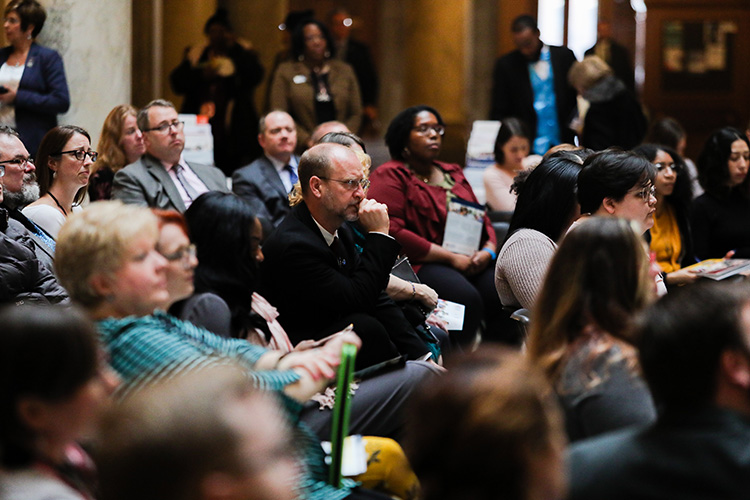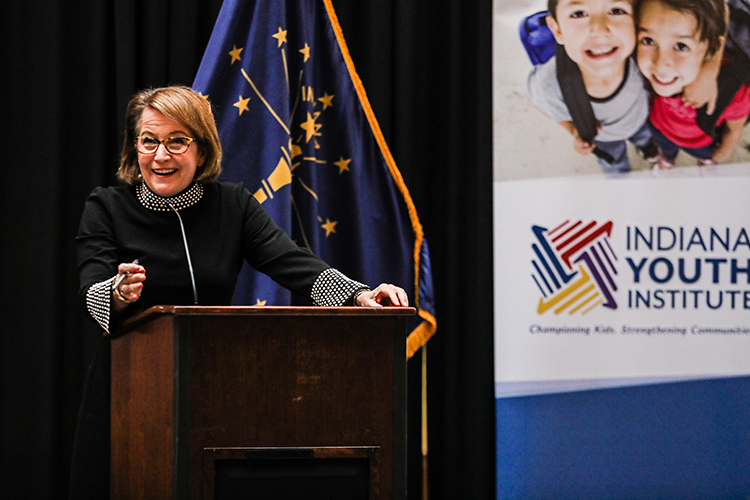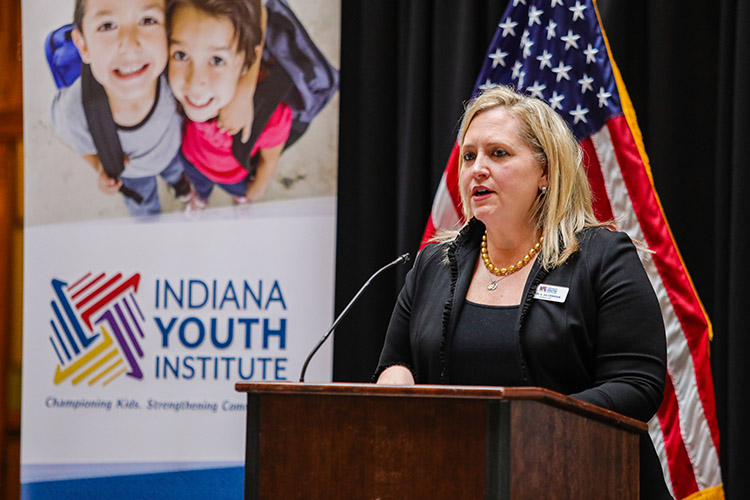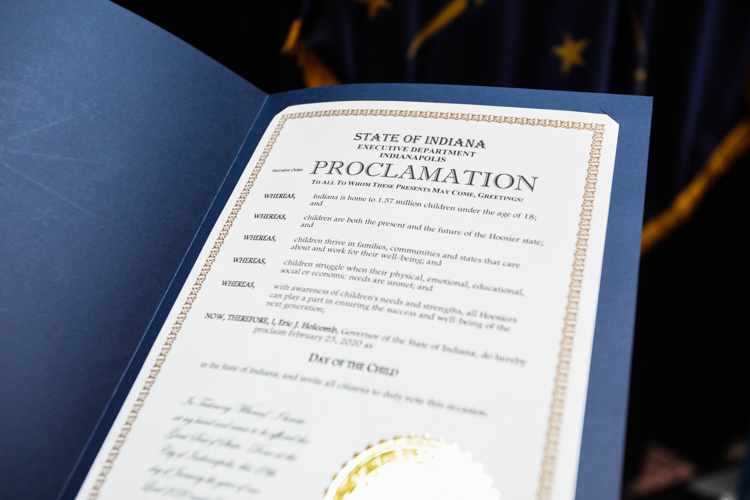By Julie L. Whitman, MSW, Executive Director | Commission on Improving the Status of Children in Indiana

The Commission on Improving the Status of Children in Indiana hosted the Indiana Youth Institute’s “State of the Child” presentation at the State House on February 25. The State of the Child has become an annual event to launch the most recent version of the Indiana KIDS COUNT Data Book. Every year IYI publishes this compilation of the most up-to-date statistics and trends in child well-being across four domains: families and communities, economic well-being, education, and health.

Because the information is particularly useful to policymakers concerned with children and families, the event is held during the legislative session. IYI is a nonprofit partner that authors the book and presents the data. The State House event is the first of what will be more than twenty-five similar presentations across the state, bringing child well-being data to local communities.
“It’s in all our best interest to make sure each and every Indiana child is healthy, engaged and supported, and to do so we must first understand their current reality,” said IYI President and CEO Tami Silverman.

A few sobering facts about that current reality include:
- Compared to neighboring states, Indiana has the highest number of children involved in the foster care system
- Large racial disparities persist in the use of suspension from school
- An increasing number of children are being raised by grandparents
- 14% of Indiana’s households reported having at least one severe housing problem
- Indiana’s high school graduation rate has been decreasing
- Hoosier children and youth are diagnosed with depression and anxiety at rates higher than the national average
- 1 in 3 children ages 10-17 are overweight or obese, and 1 in 6 children are food insecure
- Indiana has one of the highest infant mortality rates in the Midwest
The State of the Child event emphasized that all Hoosiers have a role to play in solving these challenges, whether that is to volunteer as a CASA, help revise school discipline policies, or spread the word about safe sleep practices for infants. The first step in solving problems is understanding them, and the Indiana KIDS COUNT Data Book is a good place to start.

The Family First Prevention Services Act of 2018
By Honorable Gael Deppert, Magistrate | Marion Superior Court, Juvenile Division
The Family First Prevention Services Act of 2018 allows the use of federal child welfare funding for services to prevent children from entering foster care. Children at risk of entering foster care and their families can receive time-limited mental health treatment, substance abuse prevention and treatment, and in-home, skill-based supports for parents.
When children must be removed from their homes, relative and foster care placements are prioritized. Other provisions in the FFPSA include funding for kinship navigator services and federal funding limitations for children who are not placed in a foster family home or in a Qualified Residential Treatment Program. For children placed in a QRTP, courts must determine the appropriateness of a child’s placement within 60 days of placement, with ongoing reviews to include whether the child’s needs could be met in a family foster home instead. Indiana expects to fully implement the FFPSA in late 2020.
A session is scheduled on FFPSA during the Juvenile Judicial Officers Annual Meeting currently set for June 18-19, 2020, which may not be held due to COVID-19 restrictions.